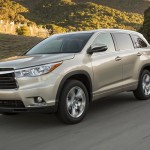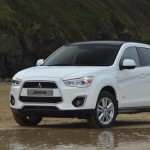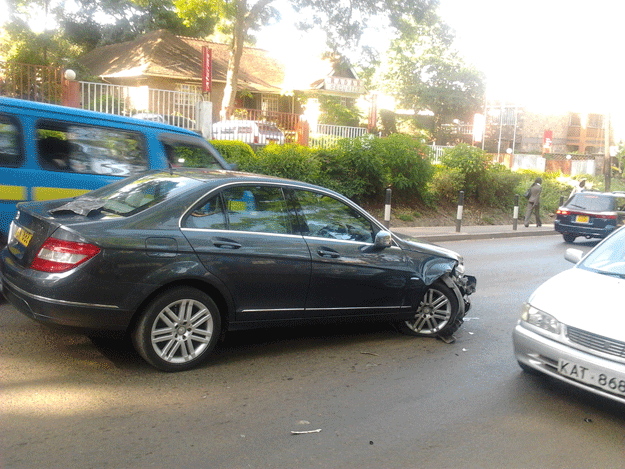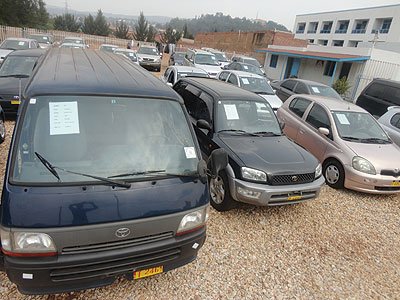2014 Honda CR-V diesel review
When the fourth generation Honda CR-V made its first appearance at the Australian International Motor Show in 2012, the cleverly designed new model lacked one key feature inherent in all of its mid-size SUV rivals – the option of a turbodiesel engine.
Despite this, the new model’s intrinsic appeal saw its popularity nearly triple between 2012 and 2013, but overall sales still placed fourth behind the Mazda CX-5, Toyota RAV4 and Subaru Forester in the mid-size SUV segment.
More than 12 months later, the Japanese brand has added a torquey and efficient 2.2-litre turbodiesel to round out the lineup, next to the existing Comfortable Runabout Vehicle’s 2.0-litre and 2.4-litre petrol options.
PRICES AND RANGE
Starting from $38,290, the all-wheel drive-only new engine is available in DTi-S and DTi-L trim levels that almost match the existing VTi-S and VTi-S petrol variants on spec, but adds a six-speed manual DTi-S option – to create the only self-shifter CR-V with 4WD. In five-speed auto guise, the $40,590 DTi-S and $45,340 DTi-L variants command $3,050-$4,300 more than their petrol counterparts.
The CR-V diesel is being positioned toward the luxury end of the lineup, so DTi-S models come with a leather steering wheel, dual-zone climate control, satnav, speed-limiting cruise control, Twin multimedia screens, Bluetooth phone connection, reversing camera and rear parking sensors, auto headlights and wipers, front and rear fog lights, and 17 inch alloys.
Forming a new flagship for the CR-V lineup, the auto-only DTi-L adds leather trim, eight-way power driver’s seat with memory, front seat heaters, front parking sensors, proximity keys, bi-xenon headlights, active cornering lights, roof rails, and 18 inch alloys.
DESIGN
The new diesel CR-V DTi-S and DTi-L are almost identical to their VTi-S and VTi-L respective conterparts, with the same 17 and 18 inch alloys remaining the key visual differentiator between the two spec levels.
The UK-built diesel models can also be identified by their LED taillamps and daytime running lights, plus several minor details inside and out.
The CR-V’s five-seater family-friendly status is unaffected with addition the new engine, and maintains the petrol models’ 556L seats-up cargo space, which expands to 1120L with the ‘one-motion’ 60/40 rear seat folding mechanism, and a full-size alloy spare under the cargo floor.
Like most medium SUVs, the CRV is a good size for three kids across the back seat, or two adults, with plenty of legroom and toe room beneath the front seats.
Matching the segment-best 2000kg unbraked tow rating is the manual DTi-S, with the manual X-Trail diesel and Outlander diesel sharing the same figure. The auto DTi-S and DTi-L match the petrol CR-Vs’ 1500kg unbraked rating.
ENGINE/TRANSMISSION
The CR-V diesel’s 110kW and 350Nm outputs are a near match for the also all-wheel drive-only diesel RAV4, Forester and Outlander, but trail behind the 127kW/360Nm X-Trail and the 129kW/420Nm of the CX-5.
The 2.2-litre turbodiesel offers the best torque and fuel consumption figures in the CR-V range, along with improved driveability thanks to the maximum torque being on tap earlier, from 2000-2750rpm.
The diesel CR-V joins the existing 114kW/190Nm 2.0-litre and 140kW/222Nm2.4-litre petrol options to fill out the range.
Only the DTi-S is available with the option of a six-speed manual, while the auto DTi-S and DTi-L make do with a five speed unit against the segment standard of six-speeds.
The diesel particulate filter (DPF) equipped CR-V diesel’s fuel consumption is also competitive, with the manual DTi-S rated at 5.8L/100km combined, while the auto DTi-S climbs to 6.7L/100km and 6.9L/100km for the top DTi-L. The diesel also significantly betters the 7.7-7.8L/100km 2.0-litre and 8.7L/100km 2.4-litre petrol CR-V models.
SAFETY
Like petrol CRVs the new diesel models carry a five star ANCAP safety rating, with front, side and full-length curtain airbags, hill-descent, stability and traction control, and trailer stability assist.
DRIVING
As suggested by its outputs, the 2.2 litre delivers a typically creamy turbodiesel urge, but its noise suppression at idle and speed is particularly impressive. Modern turbodiesels are often described as barely detectable from their petrol counterparts, and this is one such unit.
We drove both the manual DTi-S and auto DTi-L on launch, and the six-speeder offers a typically Honda well-defined gate, with a short throw. Honda expects 90 percent of diesel CR-Vs will be the five speed auto though, which despite its ratio count being one fewer than its closest diesel rivals, it does an excellent job with the diesels torque delivery. It shifts smoothly, and is refreshingly happy to downshift with a flex of the right ankle.
There’s plenty of shove for overtaking on the open road, and the engine delivers its grunt in an unfussed fashion, and the circa-2L/100km fuel consumption advantage will result in fewer trips to the bowser.
Like the petrol CR-V variants, the diesel rides with a firm composure that is controlled but not harsh. Around corners, it’s probably less dynamically engaging than the RAV4 or the CX-5, but the Honda would have the edge on long highway trips.
VERDICT
We’ve been looking forward to the CR-V diesel, and it offers a genuine alternative to its turbodiesel competition. The driveability and fuel efficiency of the 2.2L will win it many friends, and if you can justify the extra dollars over a petrol, it’s indeed the best CR-V you can buy.
Source: Cars Guide
Related Posts
Related Posts
- Mitsubishi updates its ASX for 2014, with big price reductions across the range and an improved interior.
- The Range Rover is perhaps one the most prestigious cars on the market.
- The BMW 435i is the first version of the new generation Convertible
- Volkswagen is entering an increasingly competitive sector of the market























